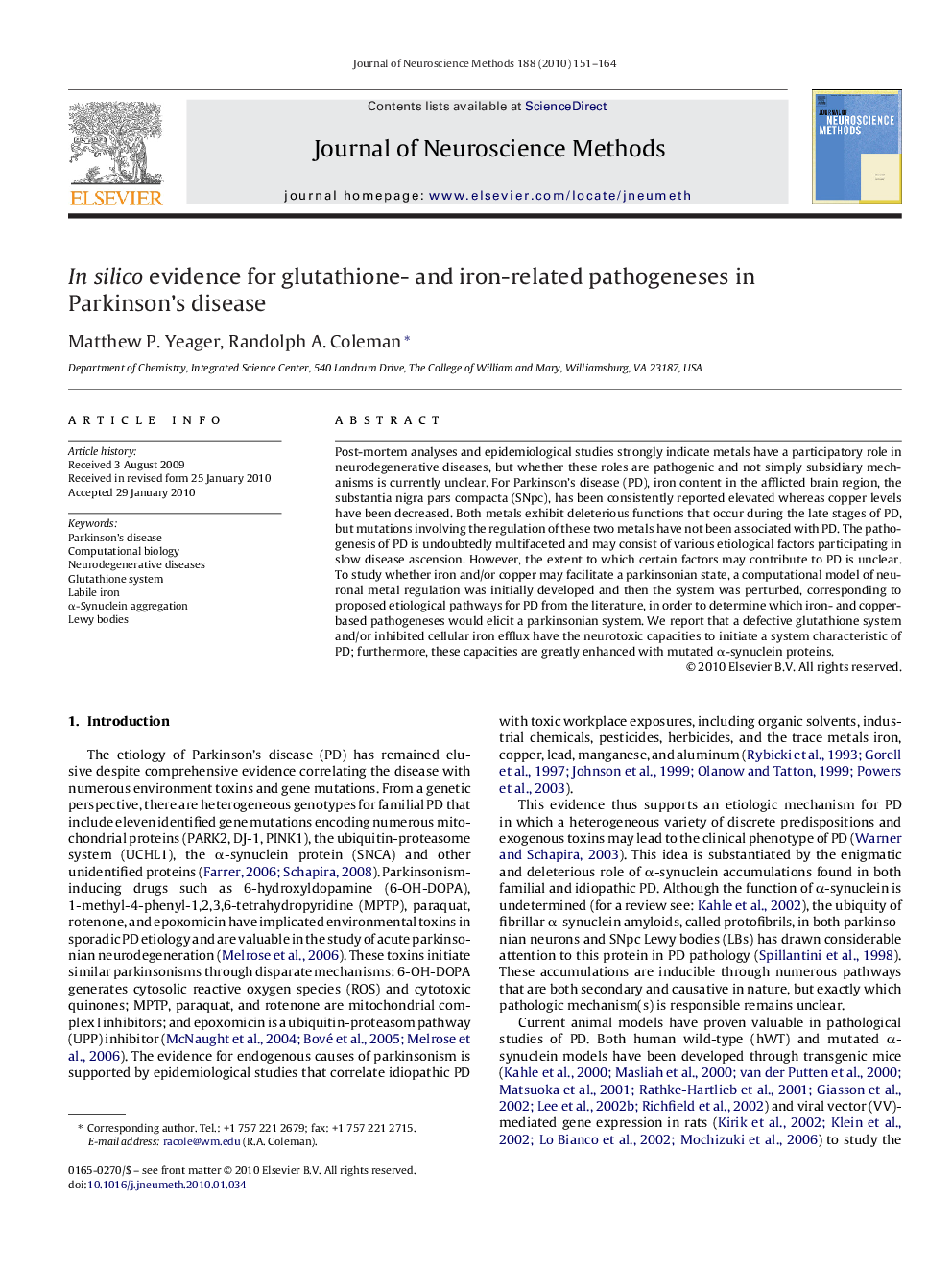| کد مقاله | کد نشریه | سال انتشار | مقاله انگلیسی | نسخه تمام متن |
|---|---|---|---|---|
| 6270078 | 1295176 | 2010 | 14 صفحه PDF | دانلود رایگان |
عنوان انگلیسی مقاله ISI
In silico evidence for glutathione- and iron-related pathogeneses in Parkinson's disease
دانلود مقاله + سفارش ترجمه
دانلود مقاله ISI انگلیسی
رایگان برای ایرانیان
کلمات کلیدی
موضوعات مرتبط
علوم زیستی و بیوفناوری
علم عصب شناسی
علوم اعصاب (عمومی)
پیش نمایش صفحه اول مقاله

چکیده انگلیسی
Post-mortem analyses and epidemiological studies strongly indicate metals have a participatory role in neurodegenerative diseases, but whether these roles are pathogenic and not simply subsidiary mechanisms is currently unclear. For Parkinson's disease (PD), iron content in the afflicted brain region, the substantia nigra pars compacta (SNpc), has been consistently reported elevated whereas copper levels have been decreased. Both metals exhibit deleterious functions that occur during the late stages of PD, but mutations involving the regulation of these two metals have not been associated with PD. The pathogenesis of PD is undoubtedly multifaceted and may consist of various etiological factors participating in slow disease ascension. However, the extent to which certain factors may contribute to PD is unclear. To study whether iron and/or copper may facilitate a parkinsonian state, a computational model of neuronal metal regulation was initially developed and then the system was perturbed, corresponding to proposed etiological pathways for PD from the literature, in order to determine which iron- and copper-based pathogeneses would elicit a parkinsonian system. We report that a defective glutathione system and/or inhibited cellular iron efflux have the neurotoxic capacities to initiate a system characteristic of PD; furthermore, these capacities are greatly enhanced with mutated α-synuclein proteins.
ناشر
Database: Elsevier - ScienceDirect (ساینس دایرکت)
Journal: Journal of Neuroscience Methods - Volume 188, Issue 1, 30 April 2010, Pages 151-164
Journal: Journal of Neuroscience Methods - Volume 188, Issue 1, 30 April 2010, Pages 151-164
نویسندگان
Matthew P. Yeager, Randolph A. Coleman,